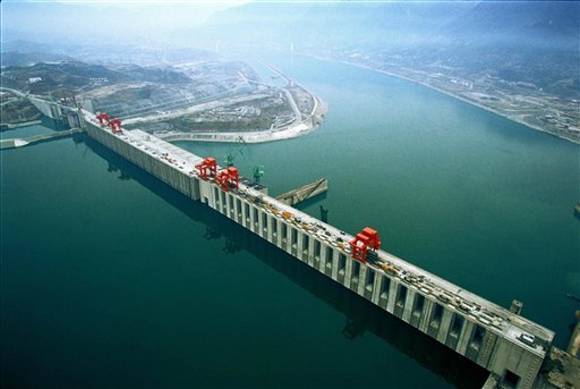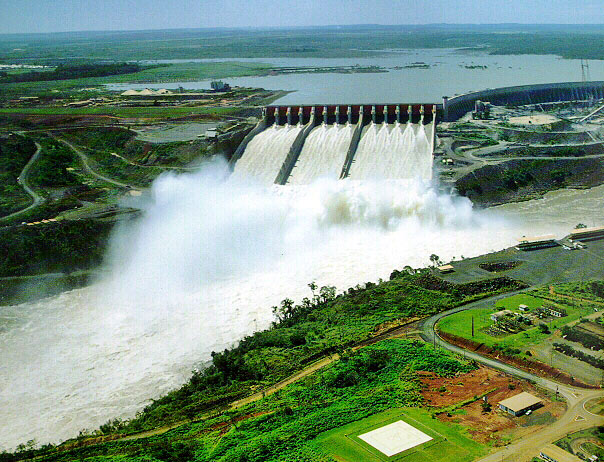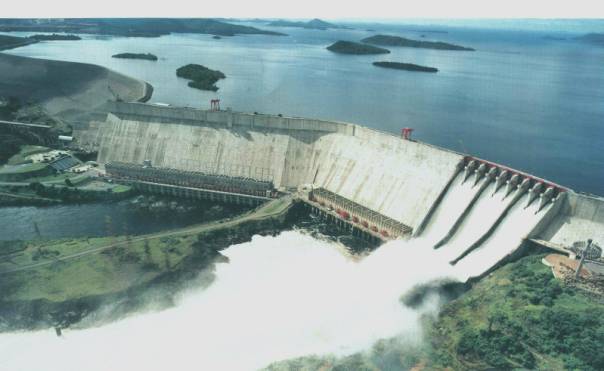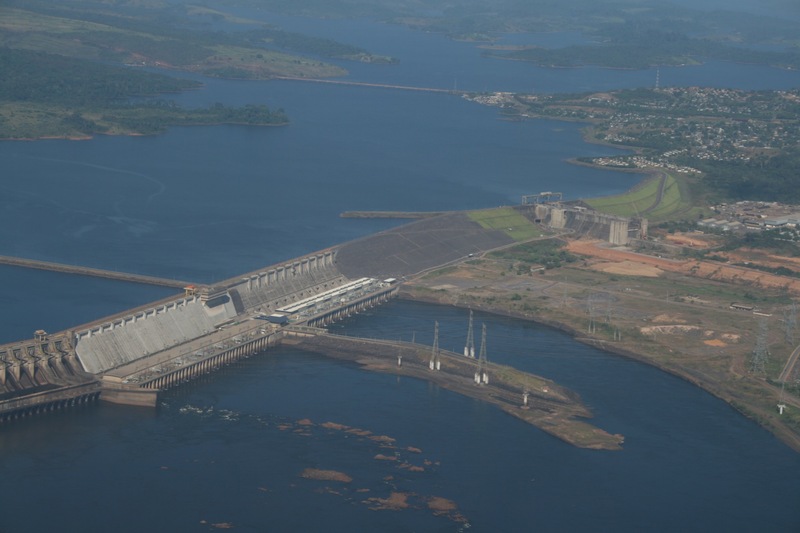Washington State: Big Hydro Development
At around the turn of the last century, dam technology was reasonable for energy generation. Given the large water resources in Washington, hydroelectric power became the clear best choice for energy generation. First dam (Mossyrock, still in operation) had a Nameplate capacity of 300 Megawatts and was built in 1905. (Note: Nameplate capacity is total potential capacity; actual operation usually produces about a factor of two less power due to strong seasonal fluctuations in water flow). Given the population at the time, 300 MW is a large unit capacity - more on this later.
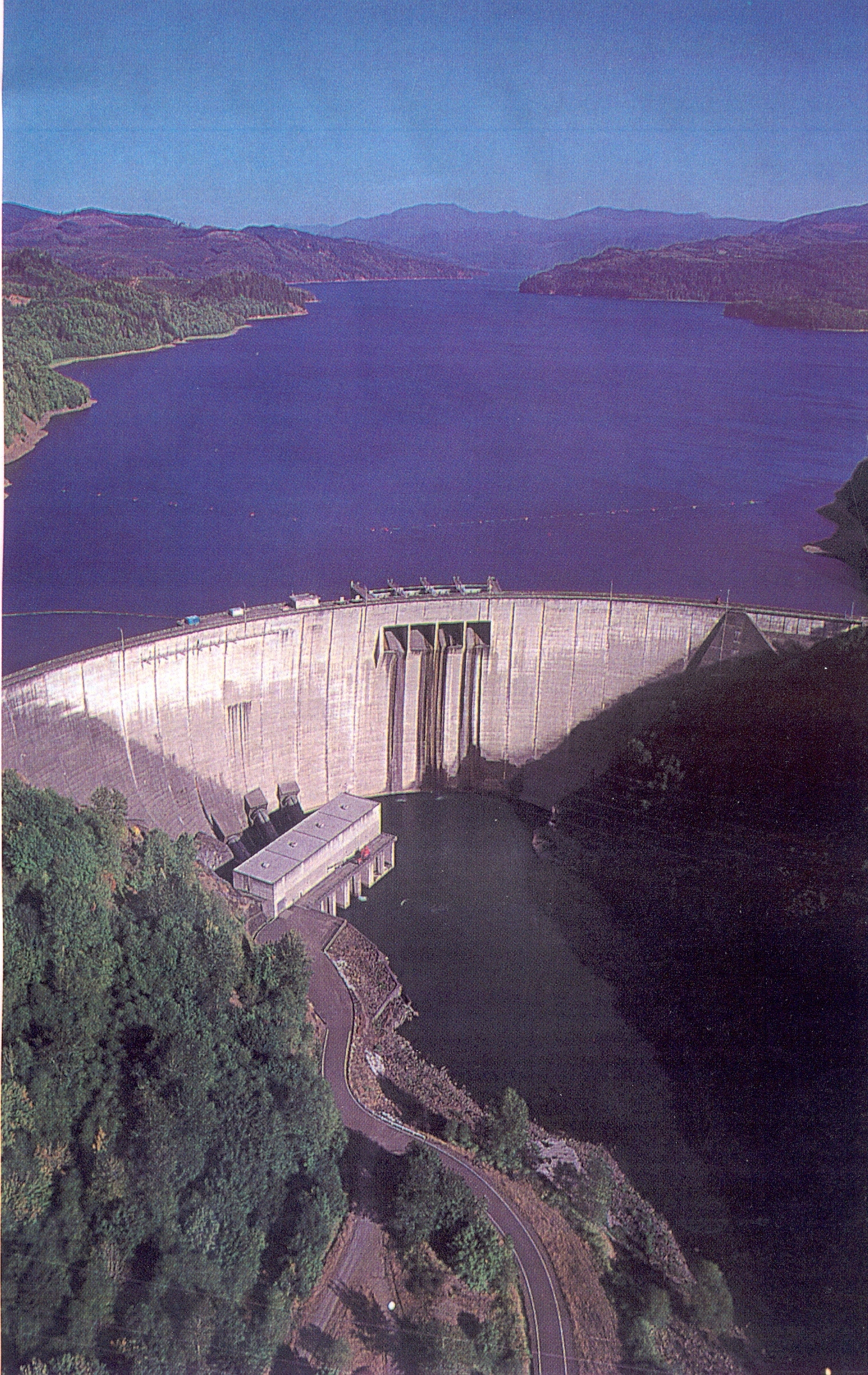
Hydroelectric growth is fairly slow (see graph below). Between 1905 and 1931, 8 new dams were built which raised the total nameplate capacity to 1000 Megawatts in 1931. Still, at that time, this was sufficient to support a regional population of 2 million. We will soon enter the era where single dams are now at least 1000 MW. In 1933 the Rock Island Dam (near Chelan) (625 MW) on the Columbia is completed:
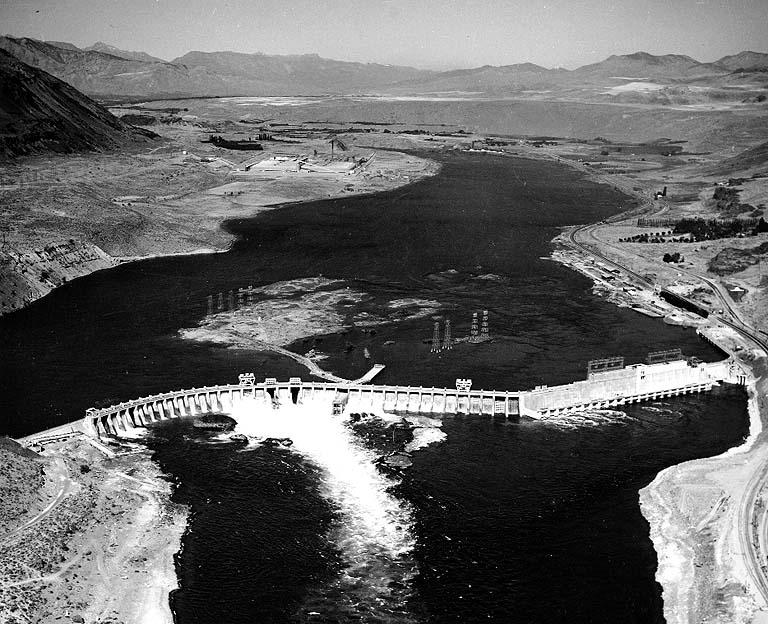
In 1938 The Bonneville Dam is completed (1100 MW); second power house added in 1982 to produce another 1100 MW. This dam would be come a high priority WW II Japanese air target in any mainland attack.
 In 1941 the gigantic Grand Coulee Dam first came on line with a nameplate capacity of about 2000 MW; since then two new powerhouses have been added bringing it to a total nameplate of 6800 MW. 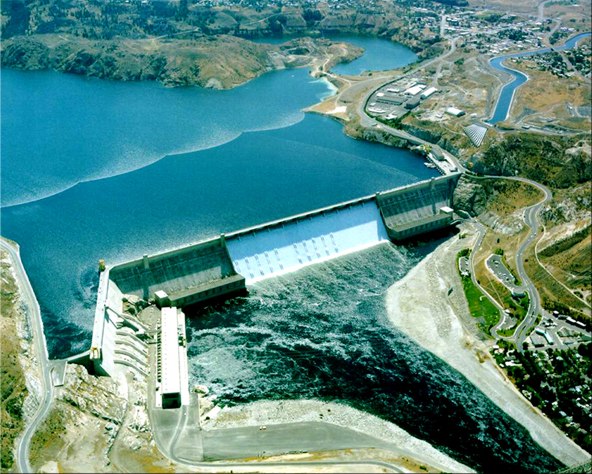
 The Grand Coulee Dam was the largest concrete structure ever built. This barricade, which raises the water surface 350 feet above the old riverbed, is 5,233 feet long, 550 feet high, and contains 11,975,500 cubic yards of concrete.
This structure was essential to the infrastructure of the American West
and the Bureau of Land Reclamation. When Grand Coulee is finished, the total hydropower nameplate capacity
in Washingtion is now 10000 MegaWatts. Also at this time, the population is 2.4 Million people. Now the population is closer to 7 million and the amount of hydropower has not scaled with population growth.
Now back to our regularly scheduled program: By 1959, 4 other large Dams are constructed on the Columbia river raising the total nameplate capacity to 16000 Megawatts. By 1968, 4 more Dams had been added (none have been added on the columbia since) and total nameplate capacity is now 23000 Megawatts. Note that apparent salmon declines began in the 1980s, long after the dam network was in place. From 1968 to 1975, 3 large Dams are constructed on the Snake River (in Washington State - there are other dams in Idaho) bringing the total hydro nameplate capacity to 25600 Megawatts, essentially what it is today. In Graphical Form, this history looks like the following:  That basic waveform is duplicated when one consider all sources of power generation in washington state. At present, hydro in WA makes up about 65-70% of its nameplate power generation.
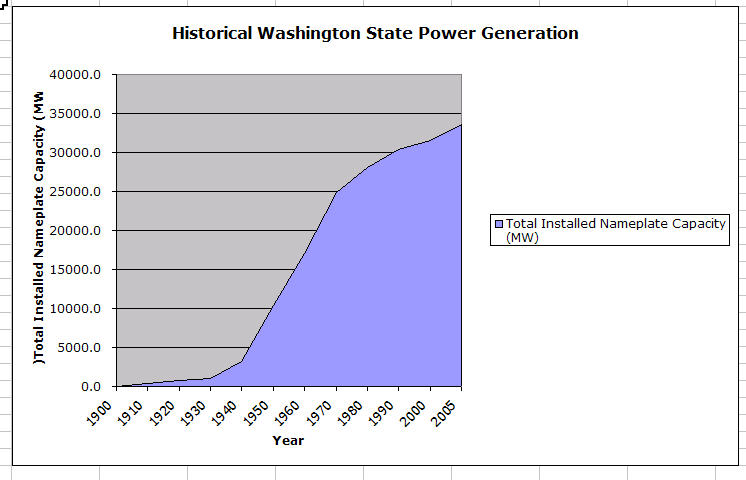
|

 multiply by about 9 to
get US capacity addition equivalent of 200,000 MW
multiply by about 9 to
get US capacity addition equivalent of 200,000 MW
